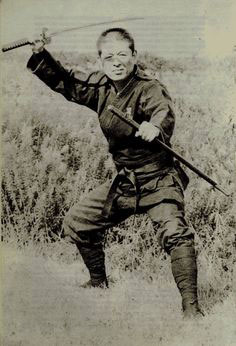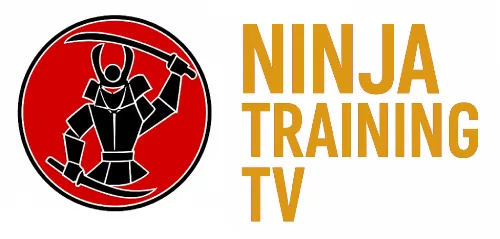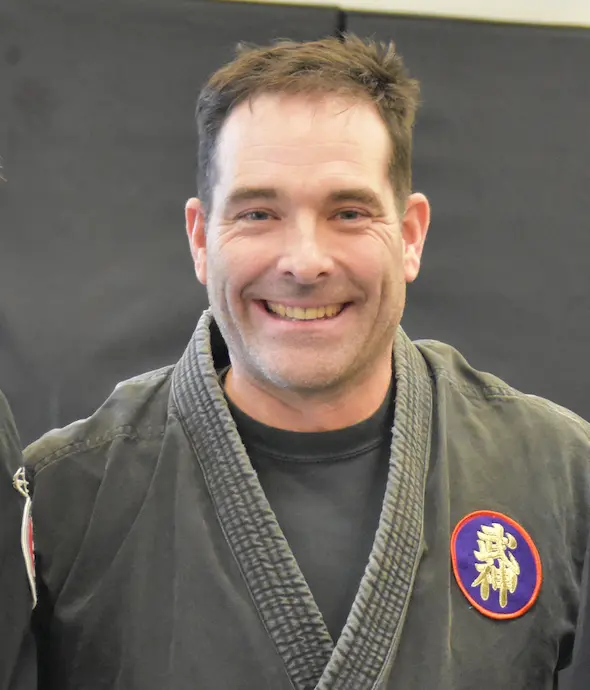It is safe to say that it’s not generally known when the first person picked up a short stick and hit something or someone with it, or used it for extra stability to support themselves. The use of the stick as a tool or weapon is ancient and certainly predates recorded history, but what is known is that many centuries ago the Japanese recognized the versatility and effectiveness of a short staff in combat and developed the art of “Hanbojutsu” (Half-Staff Way) to a sophisticated level.
 What Does Hanbo Mean?
What Does Hanbo Mean?
Hanbo literally translated means, “half-staff”, and is similar in length and feel of a simple walking cane or katana sword. The Hanbo is typically around 3 feet in length, or waist height, of varying thickness, and is usually made from a hardwood of some kind. It is commonly used as a melee bludgeoning weapon, it is after all just a sturdy stick, but many precise strikes and grappling can be done with this weapon as well. Hanbojutsu has evolved over the many centuries of Japanese warrior culture to incorporate and adapt techniques from the full-staff of 6 feet, spear, halberd, as well as the sword, to make Hanbojutsu an exceptionally functional martial weapons system.
One half-staff origin story comes from a Japanese 14th century battle journal, where a defending warrior’s spear tip and most of the shaft was cut off by a larger opposition soldier who was wielding a large tachi sword. Leaving only a three foot section of staff left to use, the story goes that the defending warrior adopted a wide-open stance, similar to Hira no Kamae (flat posture), with the stick in one hand and enticed the opposition soldier to attack.
As the tachi sword wielding solider went to chop down at the half-staff wielding warrior, the warrior enacted quick body evasion skills, avoided the cut, and forced his stick into an open space in his attacker’s helmet and threw it off. Then, with a sudden return stroke, he cracked the skull of the tachi sword soldier.
Over time, many Japanese martial schools systemized the wide array of Hanbo skills; parrying, swinging, smashing, stabbing, grappling, and leverage techniques developed into a codified system. One of the most popular schools to utilize Hanbojutsu, still taught presently, is known as “Kukishinden Ryu” (Nine Gods Spirit School), which is one of the main weapon schools studied in the Bujinkan (Divine Warrior Hall) martial organization.
Kukishinden Ryu is generally thought to have been founded in the 14th century A.D., and the historical scrolls of this school document an account from the 8th century A.D. of a wooden weapon “of similar length to a sword” being used against a real sword. It tells the story of a jealous prince who was seeking to defeat a famous warrior by switching the warrior’s real sword with a wooden stick of the same approximate size without the warrior knowing.
Eventually a fight ensued between them and when the warrior swung at the prince the wooden stick ended up breaking the prince’s steel sword in half, thus defeating the prince. Throughout the history of Kukishinden Ryu, formal postures, bowing, kata (forms), and waza (techniques) were systemized, taught and passed down from master to master up to the present day lineage holder, Sensei Masaaki Hatsumi, who founded and currently heads the Bujinkan Ninjutsu organization.
An excellent resource for many of the Hanbo techniques within Kukishinden Ryu School come from a book written by Sensei Hatsumi and Quintin Chambers entitled “Stick Fighting”, published in 1971, by Kodansha International, Ltd. This book is highly recommended to anyone interested in learning the basic striking and grappling techniques of the Hanbo. It pairs nicely with Ninja Training TV’s Hanbo instructional video, featuring 15th Dan Sensei Mark Roemke.
Hanbo Video Training Basics
In the video Sensei Roemke not only goes over Hanbo basics but also instructs the Hanbo student with useful drills to improve upon these basics. Thinking like a ninja, “outside-of-the-box” ways to use the Hanbo are also explored in this video. One of the most useful skills taught by Sensei Roemke is movement flow, as being able to move and flow between different techniques and combat ranges is the key to successfully handling this weapon in real situations. So find a short sturdy stick, check out our Hanbo weapon video, and KEEP TRAINING.
By the TaiChi Ninja
(aka. Kyle Connally)

